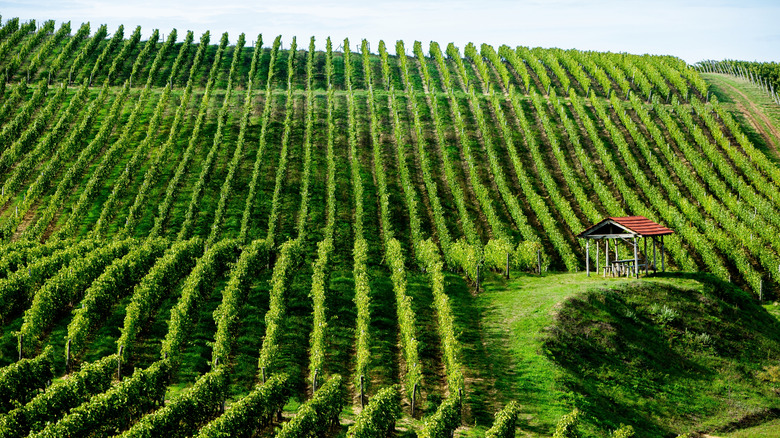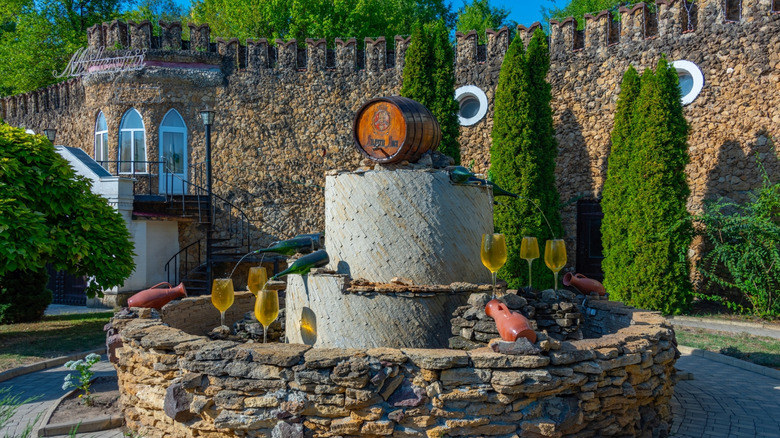La Rioja may be Spain’s most renowned wine area,boasting more than 500 vineyards. Tuscany in Italy and Bordeaux in France are also well-known for their wine production. Although these nations have built a reputation for creating internationally acclaimed types of wine, there are still numerousunderappreciated and less busy wine areas in Europethat are frequently ignored. Surprisingly, a small nation in Eastern Europe houses the world’s biggest wine cellar and has a deep-rooted history of wine production, but it is still not widely recognized by wine lovers. Moldova, located between Ukraine and Romania, is one of Europe’s most well-kept secrets, and its rich winemaking heritage is definitely worth exploring.
Moldova is conveniently accessible by air, with Chișinău International Airport acting as the primary entry point. From this location, tourists can discover a variety of wine regions that have been around for millennia. The most effective method of travel is by car, enabling visitors to enjoy the scenic views and take breaks to taste regional wines — particularly at the renowned winery, which features the world’s largest wine cellar and is only 22 minutes from the airport.
Over the years, Moldova has been impacted by numerous cultures that have influenced its traditions, while still preserving its unique identity. Wine is strongly connected to Moldovan culture, and travelers don’t need to go far to experience some of the best and least-known wines in Europe.
Read more: Top European Locations to Explore in December
The Origins of Wine Production in Moldova

When exploring Europe to experience the finest wines globally, numerous tourists head to well-known regions, yet Moldova presents a less recognized option with a deep historical background. The practice of winemaking has been a longstanding custom throughout Europe for many centuries, but remarkably, Moldova and Georgia are considered some of the earliest wine-producing nations. Moldova’s tradition of winemaking goes back an astonishing 7,000 years, while Georgia’s history extends to 8,000 years, marking it as the oldest known wine-producing country.
Due to ancient winemaking techniques brought by the Greeks and Romans, viticulture turned into a consistent activity, and wine eventually evolved into a symbol of prestige, particularly among the upper class. Interestingly, by 1596, Moldovan wine had become a major source for the Russian and Polish markets, and by the 1800s, the area known as Bessarabia—then under the Russian Empire—was among the leading wine-producing regions. Moldovan wines later received global recognition, earning accolades at the Paris World Exhibition and being appreciated by British royalty and others.
Today, Moldova is becoming well-known as a vibrant spot for wine lovers, even though it is often recognized asthe country in Europe that receives the fewest visitors. Despite its small size, Moldova has 138,000 hectares of vineyards spread across four main wine regions and six subregions, cultivating local red wine varieties such as fetească neagră and rară neagră, as well as white wine varieties like fetească albă and fetească regală. Moreover, wine enthusiasts will discover a wide range of international grape types, ensuring there is something for every taste.
Moldova Houses the World’s Largest Underground Wine Cellar

One of Moldova’s most notable attractions is the Milestii Mici Winery, which houses the world’s largest wine cellar. It’s a must-visit destination for those who appreciate fine wine and intriguing history upon arriving in the country. Although it welcomed just over 67,000 visitors in 2024, according to theEuropean Union, Moldova has so much to offer that it won’t be long before the secret is revealed. The over 2 million bottles of wine kept in this vast underground cellar are sufficient reason to bring the country back into the spotlight. Believe it or not, wine production has become a common profession for most people in Moldova, earning it the nickname “the country with open doors in the paradise of wine.”
Surprisingly, Milestii Mici extends an impressive 155 miles, but only 74 miles are currently operational. Due to its massive size and incredible bottle storage capacity, Milestii Mici received a notable Guinness World Records title in 2005. The cellar, which was created in the 1960s on the location of an old limestone quarry, can be toured by bicycle, on foot, or by electric train through its tunnels.
TripadvisorReviewers suggest going on a complete winery tour, which features wine tasting — one of the key attractions during any visit. Moreover, you can conveniently go on day trips from Chișinău even if you don’t have a car. Although October, during National Wine Day, is seen as the ideal time to come, Moldova’s wine culture can be appreciated throughout the year.
Are you eager to uncover more secret treasures and professional travel advice?Sign up for our free email newsletterfor entry to the globe’s most closely guarded travel insights.
Read the original article on Islands.



